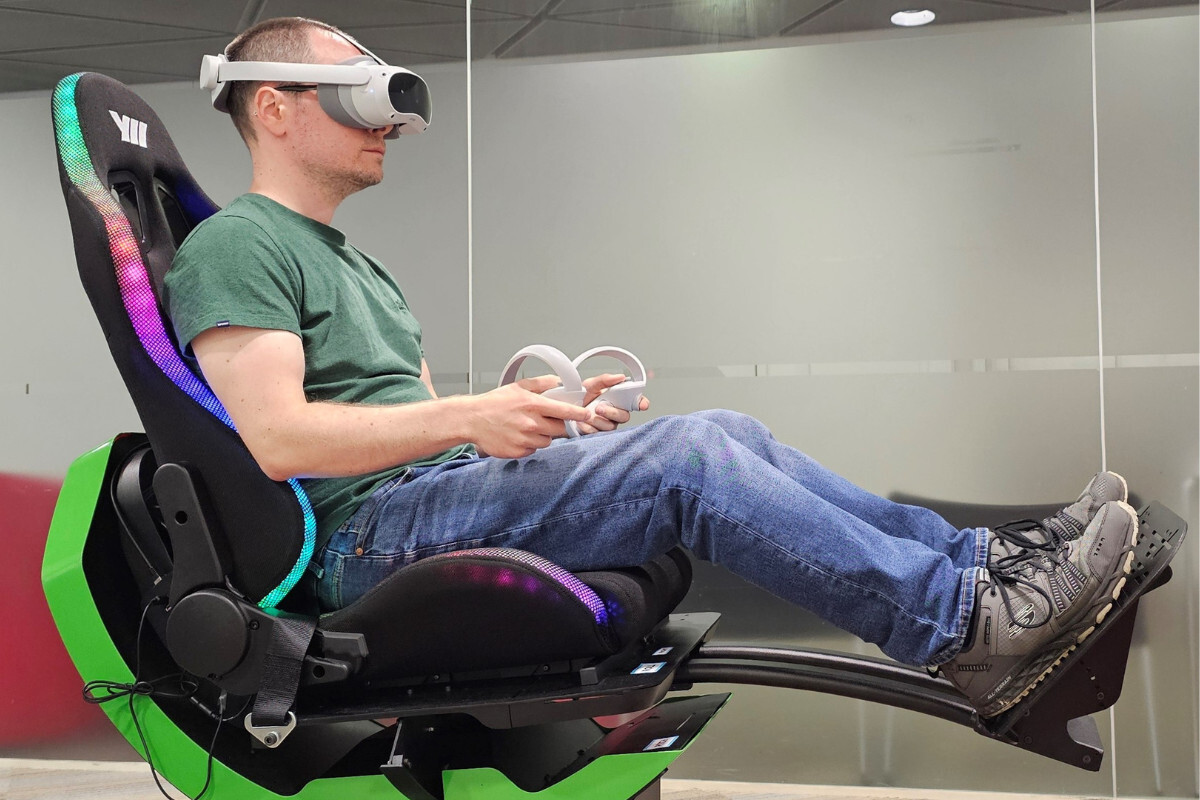Fresh research from the University of Glasgow has revealed that people’s perception of motion can be radically manipulated in passive virtual reality (VR) environments, without making them feel unwell.
In the study, researchers demonstrated for the first time that people using VR headsets in motorised simulator seats or while being driven in cars can be easily fooled into thinking they are moving or turning much more dramatically than they are in reality.
The team from Glasgow’s School of Computing Science found that small turns can be made to feel like 360-degree rotations, while turns in one physical direction can be shown as turns in the opposite direction in VR without any negative effect on users’ comfort.
The study could help expand the potential of VR to provide more immersive passive experiences, opening up new advances in video games, theme park rides, or driving and flight simulators.
“In simulator chairs and in cars, people can easily be fooled into thinking they are moving faster, further, and even in the opposite direction while their real-world movements remain relatively sedate and confined,” said Dr Graham Wilson, one of the paper’s authors.
“This could help address one of the main constraints of VR experiences, which is simply a lack of space.
“In the future, relatively inexpensive motorised chairs with limited ranges or movement could help home users experience much more immersive VR games and activities by freely manipulating their perceptions a great deal more than anyone had previously realised.”
The three-part study, which will be presented as a paper at the CHI 2025 conference in Japan later this month, examined users’ reactions to different tasks while interacting with VR environments.
During the first phase, volunteers sat in a motorised rotating chair and played a shooting game, with the team rotating the chair at different speeds and angles between 15 and 90 degrees while displaying virtual turns that steadily increased the perceived degree of motion – a perceptual manipulation technique called ‘rotational gain’.
They found that they could amplify the rotational gain up to a turn four times greater in VR than in reality – for example, making a 90-degree turn appear like 360 degrees – before users noticed the mismatch between the real and the simulated.
They also found that they could amp up the rotational gain up to 1700% – meaning that a physical turn of just 10 degrees could be made to feel like 170 degrees in VR – without causing users any discomfort.
In the second study, the team repeated the setup but introduced ‘opposed motion’, where the physical turn of the chair was not matched by the virtual turn, but instead the VR turn went in the opposite direction, and discovered having a task to focus on made volunteers less likely to notice their movements, with very few even aware of their opposed motion.
Recommended reading
Finally, in the third study, participants took their VR headsets onto the roads as passengers in a car where they were asked to play a shooting game while the research team added ‘translational gain’ to wearers’ perception – where the motion in their virtual world was up to 7.5 times faster than their real speed.
This created ‘unbounded’ experiences, where users’ perception of their route and speed were unmoored from their sense of movement through the virtual world. They also noted that when the virtual speed was increased, users were much less likely to be aware when they were turning in the real world.
“This is an exciting result, which suggests that passive VR experiences are much more open to manipulation than active ones,” said Professor Stephen Brewster, a co-author of the paper, who also leads the ViAjeRo research project investigating the use of VR and AR tech to improve passenger journeys.
“We hope our work will help designers of VR games, simulators, experiences and more drive forward advances in what is still a developing field.”
Related

